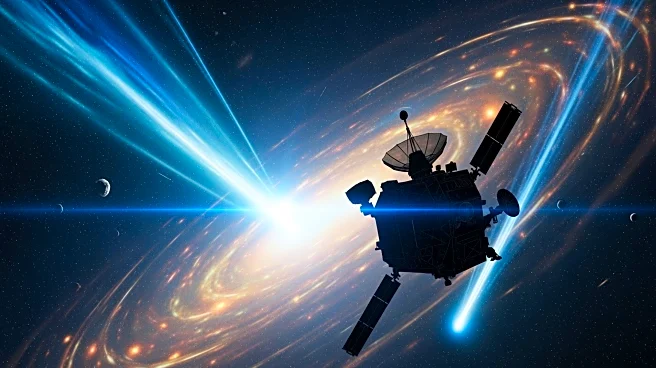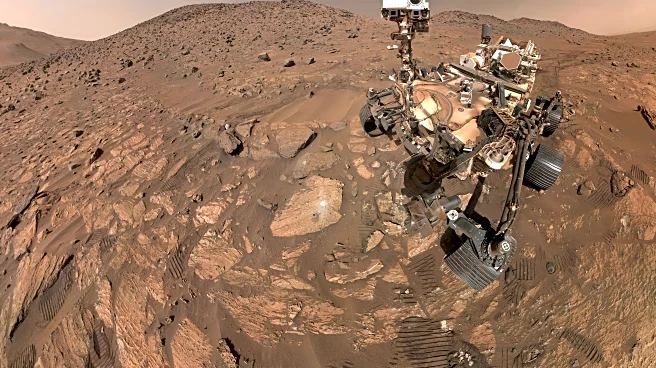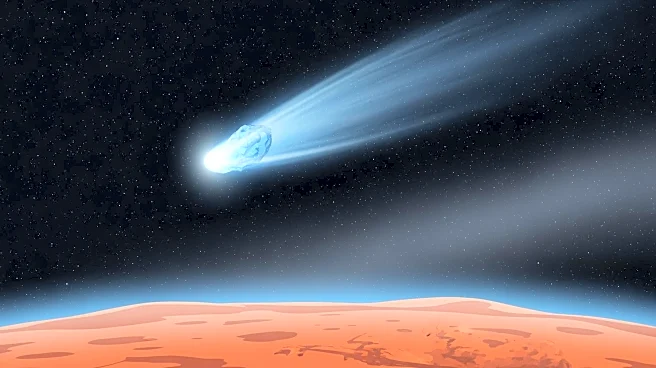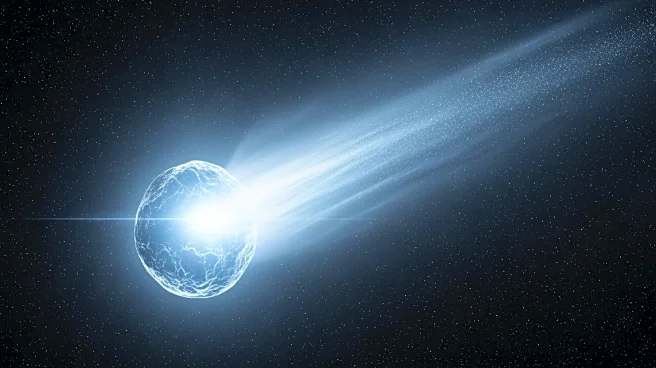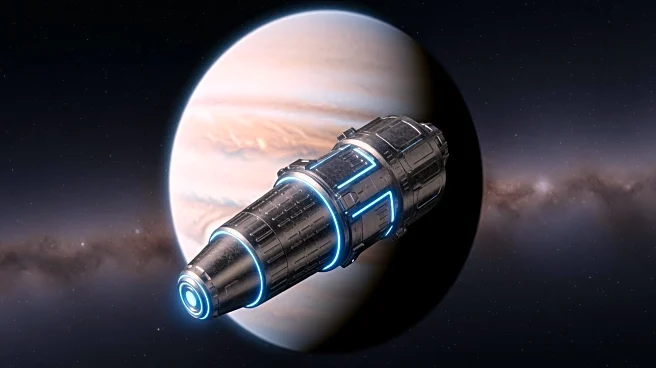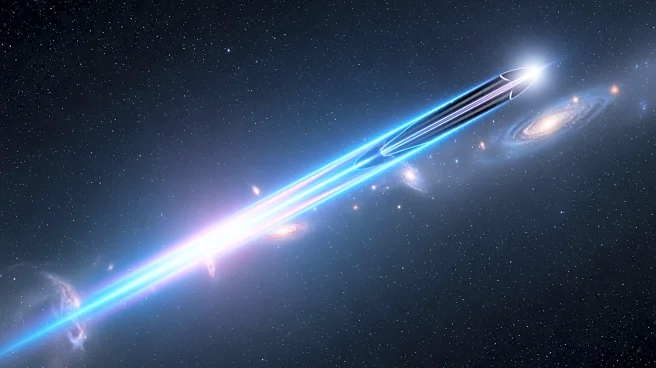What's Happening?
NASA has released a series of new images and animations of the interstellar comet 3I/ATLAS, which is currently passing through the solar system. The comet, discovered in 2021, is only the third known interstellar object
to be observed in our solar system. It passed closest to the Sun on October 29, 2025, and will reach its closest point to Earth on December 19, 2025, at a distance of 168 million miles. Despite some speculation, the astronomical community has confirmed that 3I/ATLAS is not an alien spacecraft. The comet is being observed by various NASA missions, including the Mars Reconnaissance Orbiter and the Perseverance rover, which have captured images and data to study its composition and behavior.
Why It's Important?
The observation of 3I/ATLAS provides a unique opportunity for scientists to study a fragment from another star system, offering insights into the conditions and materials present in different parts of the Milky Way. The comet's passage is also being used as a test case for global planetary defense exercises, highlighting the importance of international cooperation in tracking and understanding celestial objects that could pose a threat to Earth. The data collected from 3I/ATLAS will contribute to our understanding of interstellar objects and help refine techniques for detecting and analyzing similar visitors in the future.
What's Next?
As 3I/ATLAS continues its journey through the solar system, scientists will continue to monitor its trajectory and gather data on its composition and behavior. The comet's passage near Jupiter in March 2026 may alter its course, providing further opportunities for study. The ongoing observations will help refine models of interstellar object behavior and improve our ability to predict and respond to potential threats from space. The international community will continue to collaborate on planetary defense strategies, using 3I/ATLAS as a valuable case study.
Beyond the Headlines
The study of 3I/ATLAS challenges scientists to consider the broader implications of interstellar objects and their potential impact on our understanding of the universe. The comet's unusual composition, rich in carbon dioxide, suggests it may have formed in a colder region of the galaxy, offering clues about the diversity of environments in the Milky Way. The global interest in 3I/ATLAS also highlights the intersection of science and public curiosity, as speculation about alien origins fuels discussions about the nature of space exploration and the search for extraterrestrial life.


